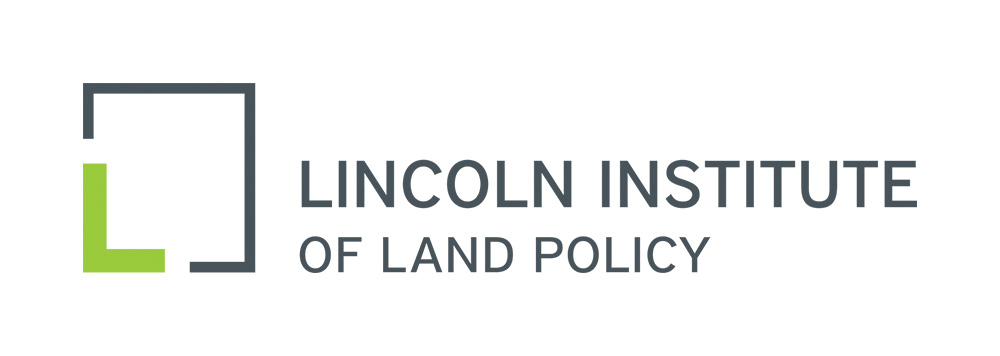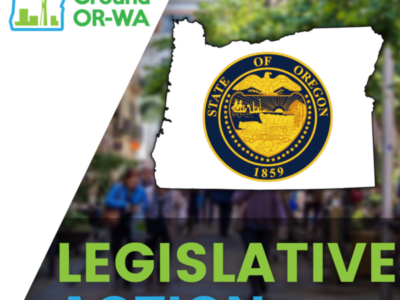
Land Lines July 2022
RETURN ON INVESTMENT: Research Links Climate Action with Land and Property Value Increases
By Anthony Flint
Excerpts:
The idea that environmental action leads to higher land and property values may seem obvious to some, but for the most part, it has not been well demonstrated. Demonstrating that link is crucial in making the case for a financial tool that could be essential for addressing the climate crisis: land value capture.
Value capture is used around the world to help fund transit, affordable housing, open space, and other public infrastructure. The approach calls for developers and landowners to contribute a portion of the increases in property value, or land value increment, that are prompted by public investment and government actions. Municipalities use the resulting revenue for infrastructure or other projects that benefit the public (Germán and Bernstein 2020).
As the world prepares to spend trillions of dollars in a massive effort to transition from fossil fuels, reduce emissions, and build resilience, value capture could help close the global climate finance gap, particularly at the local level.
Valuation and assessment methodologies are being deployed to describe the impact of government action on land and property values— and not just detailing how a new transit station or a flood-resilient park creates uplift in a local neighborhood, but how broader policies, like clean air requirements or the promotion of walking, biking, and transit, can have a positive economic impact across a wider catchment.
The “virtuous cycle” analysis may make not only a powerful economic argument for a shared responsibility in financing climate action, but a moral one, too. In many places, private developers and landowners generally walk away with the windfalls created by public investments.
“There’s a well-documented lack of funding for the action that’s needed to address the climate crisis,” said Amy Cotter, director of Climate Strategies at the Lincoln Institute. “Precious little of it operates like land value capture: created by the very action it enables, within local control.” Land value capture “won’t solve climate finance, but we see its significant potential to fill an important gap,” Cotter said.
A wide range of projects and policies that can contribute to climate resilience are manifesting themselves economically in urban contexts, whether at the scale of one city block or an entire neighborhood:
- The Eco Efficiency Ordinance for the Metropolitan District of Quito, which won a Guangzhou Award for Urban Innovation in 2021, incentivizes energy efficiency and density by selling developers the right to construct taller buildings if the projects have green elements and are near transit. Since the city adopted the ordinance in 2016, 35 projects have been approved that penciled out so well, developers had no issues returning a portion of their profits through this value capture tool. The city will invest the $10.7 million raised so far in improvements such as parks and affordable housing, and is making the ordinance part of its new land use and management plan.
- Major transit projects around the globe that are contributing to decarbonization goals, from Tokyo’s Tsukuba Express transit extension to the modernization and electrification of the interurban passenger railway in San Jose, Costa Rica, to London’s Crossrail project—the latter expected to achieve approximately 2.75 million tons of carbon savings over its lifetime—are being financed largely or in part by the assumption that property values will increase all along their corridors.
Strategically designed land value capture policies can help mitigate cases where environmental interventions are associated with gentrification and displacement, with provisions to increase affordable housing, for example.
Even as evidence of the link between environmental action and economic uplift grows, many barriers must be overcome to make land value capture work.
“What you really want is for developers to contribute to regional investments, but that’s more difficult to negotiate. The benefits are more indirect,” Van der Krabben, professor at Radboud University in the Netherlands, said.
All the more reason, scholars say, to revisit the valuation and assessment practices that establish land and property value increases in the first place. More sophisticated valuation methods have improved assessment accuracy, said Lincoln Institute Senior Fellow Joan Youngman, citing the International Association of Assessing Officers (IAAO)’s technical standard on mass appraisal of real property designed to improve the fairness, quality, equity, and accuracy of valuation. Mass appraisal is defined in that standard as “the process of valuing a group of properties as of a given date and using common data, standardized methods, and statistical testing.”
Brian Golden, the recently retired director of the Boston Planning and Development Agency, said he has sensed a “cultural shift” among landowners and developers, who recognize that public investments in resilience infrastructure plainly protect private real estate assets, making them more likely to help foot the bill.
Comment:
One of the best examples of value capture being used around the world to help fund transit is London’s Crossrail project cited in the article, now named the Elizabeth Line. This is a 118 kilometer East-West commuter line through Central London. The assumption that property values will increase along the corridor has since been confirmed. Since the new East-West rail line was announced in 2008, home prices have increased by 79% in areas near the stations due to the location benefits. Properties in these areas now typically sell for a 14% premium compared to homes in the surrounding areas – “ The gift that keeps giving”. The rail line, opened in May 2022, is projected to contribute £1.24 billion pounds ($1.9 billion dollars) annually to London’s economy. Value capture in this case did not escape the awareness of Greater London government and transit officials. The project was partially funded by tax increments imposed in the vicinity of station stops, and the sale of development rights.
As to the need to revisit the valuation and assessment practices that establish land and property value increases, it is important that valuations in special assessment district formed to allocate and collect levies from property owners be accurate. As evidenced in Greater London and many high growth cities, land values can change significantly from year to year. It is that many U.S. cities have lagged behind in valuations. Some have assigned property at below market value, which is often much higher than the taxable value. Oregon’s Measure 50 is a case in point. The failure to assess at full market value weakens the power of value capture as funding mechanism.
Those of us proposing the adoption of a land value tax know that assessments must be current and accurate for LVT to produce the intended incentive effects – capital investment in buildings, not speculation on sites increasing in value. To that end Common Ground OR/WA will be proposing state legislation directing the Oregon Department of Revenue to write administrative rules requiring all Oregon county assessors to use mass appraisal and digital mapping systems to ensure a single property measurement standard; to ensure the adoption of an annual assessment cycle; to promote transparency and public trust in the valuation process; and to oversee and ensure compliance by county assessors.
Land value capture a financial tool that could be essential for addressing the climate crisis. It is also a tool that can ensure fairness and equity in the property tax system.
Tom Gihring, Research Director
Common Ground OR-WA



